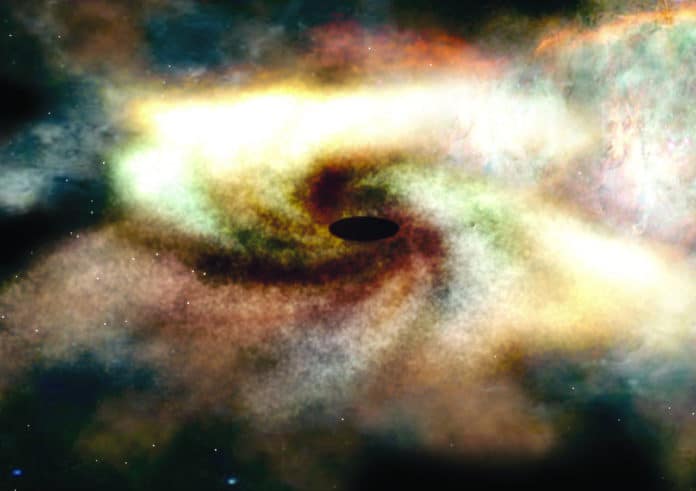The recently claimed discovery of a massive black hole in the Galactic solar neighborhood has led to controversial discussions because it severely challenges our current view of stellar evolution. Detail investigations by the Universities of Erlangen-Nürnberg and Potsdam found that it may not be a black hole at all, yet perhaps an enormous neutron star or even an ordinary star.
The black hole was discovered indirectly from the motion of a bright companion star orbiting an invisible compact object for about 80 days. The new observations have shown that the original estimations were misinterpreted and that the mass of the black hole is, in fact, very uncertain.
The most significant inquiry, specifically how the observed binary system was made, stays unanswered. A pivotal perspective is the mass of the visible companion, the hot star LS V+22 25. The more massive this star is, the more extensive the black hole must be to actuate the observed motion of the bright star. The latter was considered to be a normal star, eight times more massive than the Sun.
Scientists observed the archival spectrum of LS V+22 25, taken by the Keck telescope at Mauna Kea, Hawaii. Mainly, they studied the abundances of the chemical elements on the stellar surface and detected deviations in the abundances of helium, carbon, nitrogen, and oxygen compared to the standard composition of a young massive star.
They also observed patterns on the surface showed ashes resulting from the nuclear fusion of hydrogen, a process that only happens deep in the core of young stars and would not be expected to be detected at its surface.
Andreas Irrgang, the leading scientist of this study, said, “At first glance, the spectrum did indeed look like one from a young massive star. However, several properties appeared rather suspicious. This motivated us to have a fresh look at the archival data.”
The authors concluded that LS V+22 25 must have interacted with its compact companion in the past. During this episode of mass-transfer, the outer layers of the star were removed, and now the stripped helium core is visible, enriched with the ashes from the burning of hydrogen.
Combining their results with recent distance measurements from the Gaia space telescope, scientists determined a most likely stellar mass of only 1.1 (with an uncertainty of +/-0.5) times that of the Sun. This yields a minimum weight of only 2-3 solar masses for the compact companion, suggesting that it may not necessarily be a black hole at all, but possibly a massive neutron star or even an ‘ordinary’ star.
Their results have now been published as a highlight-paper in the renowned journal ‘Astronomy & Astrophysics.’
